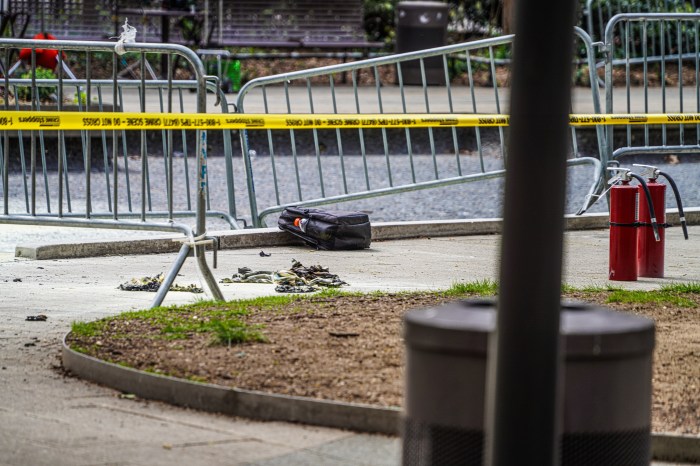By Dustin Brown
In two of the three western Queens assembly districts, this year’s elections for the state Legislature are shaping up as two-party contests: Democrats vs. Greens.
Incumbents Michael Gianaris (D-Astoria), Margaret Markey (D-Maspeth) and Cathy Nolan (D-Ridgewood) face no competition for the Democratic Party nomination, eliminating the need for a September primary, frequently the most heated race of the election cycle. The Republican Party has failed to put forward any candidates to challenge them.
That leaves only the Green Party to put up a fight and even then just in two out of three races.
Jerry Kann of Astoria, last year’s Green candidate for City Council Speaker Peter Vallone’s seat (which went to his son, Peter Vallone Jr.), is challenging Gianaris, while Patrick Langhenry of Sunnyside will face Nolan in November.
Markey is running unopposed.
The contest is a pale shadow of last year’s race for City Council, when many districts in the borough had a rash of candidates for seats all vacated by incumbents forced to leave office by term limits.
But this year’s election season is not entirely without drama. Two new assembly seats were carved out in Jackson Heights and Flushing to account for the borough’s population growth as part of this year’s census-based redistricting. Both have shaped up to be contentious races with an abundance of candidates.
Queens County Republican Party Executive Director Tom Ognibene, a former city councilman succeeded in office last year by his chief of staff, Dennis Gallagher (R-Middle Village), attributes the lack of Republican candidates to the party’s historically poor track record in a borough dominated by Democrats. Of the 16 incumbents currently representing Queens in the state Assembly, none are Republicans.
“The enrollment is so overwhelming that it can be very depressing when you put your efforts into a race and you get 22, 25 percent of the vote,” said Ognibene, who has returned to practicing law since leaving office. “Many people who do it once don’t feel energized to do it again.”
With that in mind, Ognibene said the Republicans have focused on key races where their chances of winning a seat are highest.
“What we try to do is identify those seats where we can get a potential winner, particularly in the two new seats,” Ognibene said.
Although the borough’s support of Republican Mayor Michael Bloomberg was pivotal to his slim victory in November, Ognibene noted the media mogul spent tens of millions of dollars on his campaign and enjoyed the advantage of former Mayor Rudolph Giuliani’s endorsement at a time when his popularity was soaring.
“All of those things together and Michael Bloomberg barely won,” Ognibene added.
Gianaris agrees that the borough’s Democratic majority gives the party a major boost.
“Just in terms of sheer numbers, the voters in these districts are overwhelmingly Democratic, so that gives a Democrat in that situation a very big advantage just coming out of the gate,” he said.
He also added that the lack of opposition suggests constituents are pleased by the incumbents’ effectiveness as legislators.
“I also like to think it says something about the job we’re all doing, and the opposition doesn’t really see a great chance of defeating any of us,” Gianaris said.
Where the Republicans have fallen short the Greens have emerged as a prominent force in some races, although the party’s ability to garner votes remains to be seen.
Kann, the only candidate challenging Gianaris, said the Green Party adds to the races a unique perspective, calling attention to problems the other candidates tend not to address.
“The only reason for being involved is to try and bring up the issues that the other two parties don’t bother to bring up,” Kann said.
Still, the Green Party’s platform is far more closely allied with the Democrats than the Republicans. One major plank of the Green Party, advocating cleaner energy and fighting new power plant construction in western Queens, has also been an important theme for Gianaris since he stepped into office two years ago.
Redistricting has left the three incumbents’ districts largely intact. Markey lost part of Woodside and Jackson Heights but now extends further south into Middle Village. Gianaris’ district still covers nearly all of Astoria, while Nolan’s area stretches from Ridgewood northward through Maspeth, Woodside, Long Island City and a sliver of Astoria.
Reach reporter Dustin Brown by e-mail at Timesledger@aol.com or call 229-0300, Ext. 154.

































